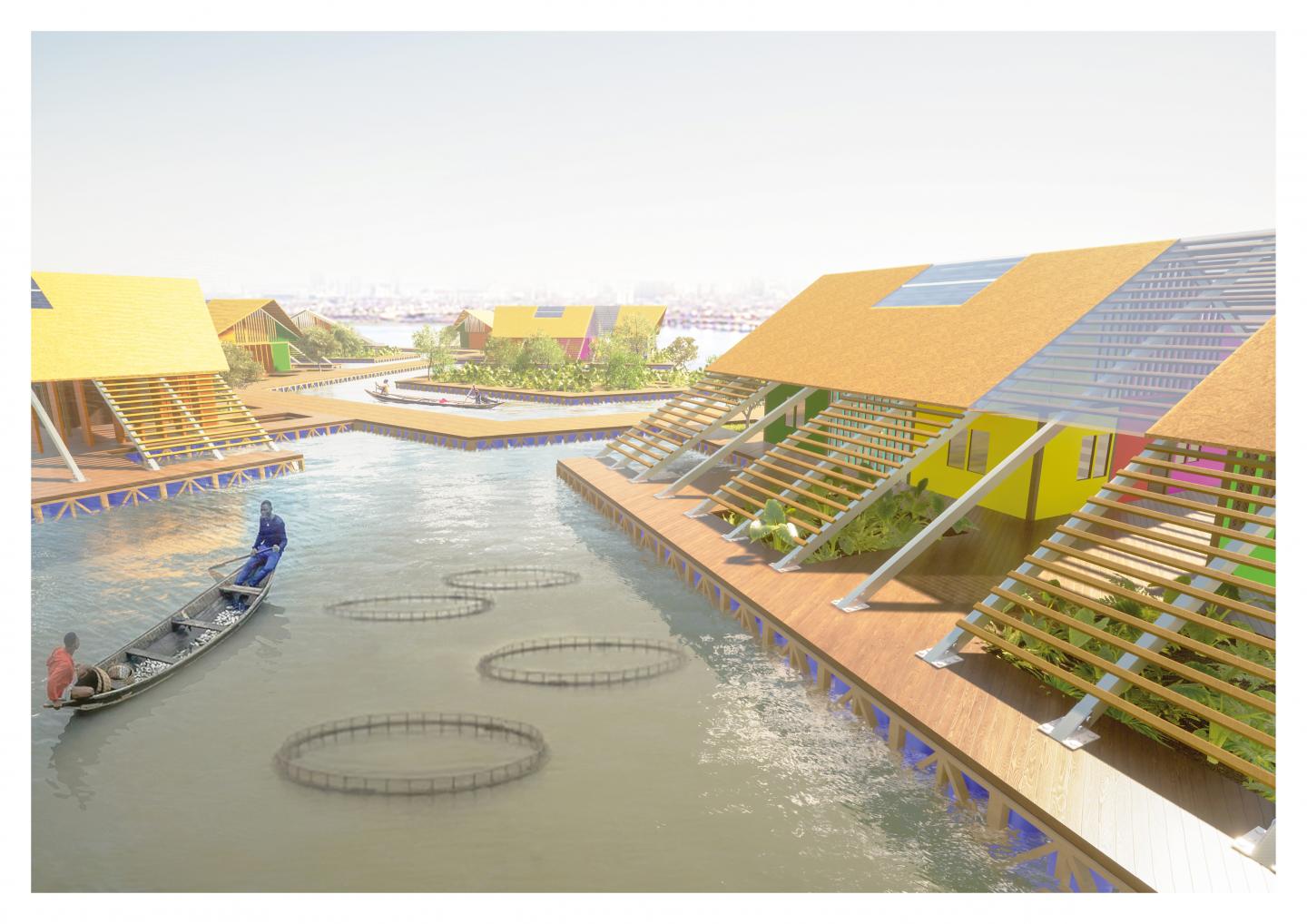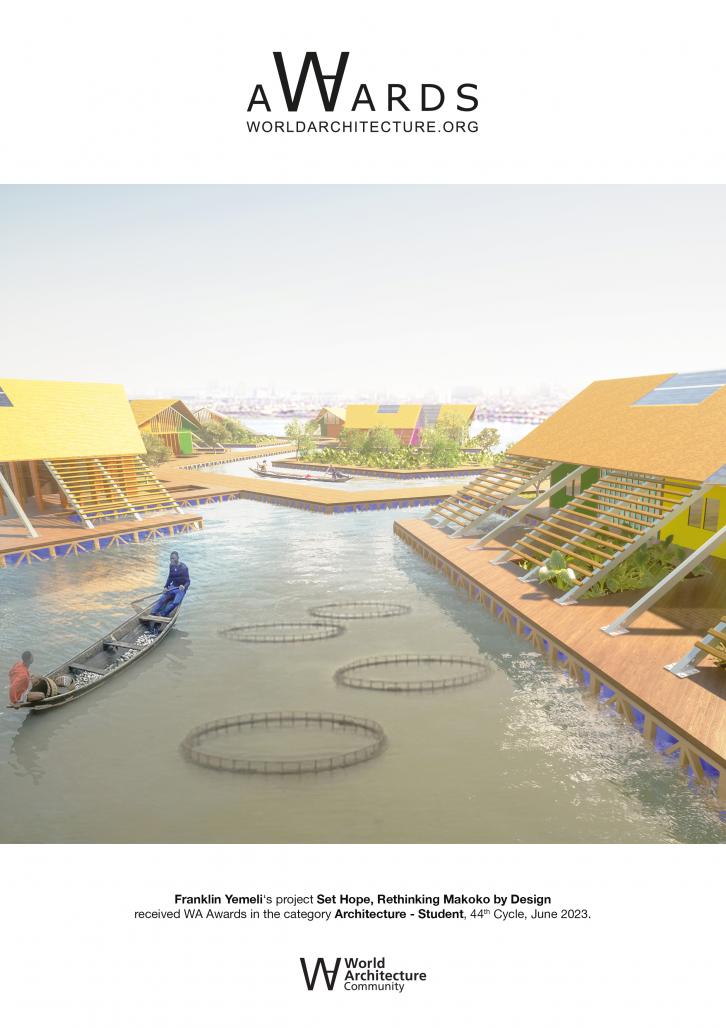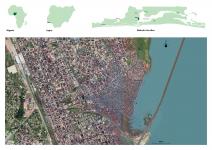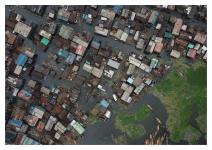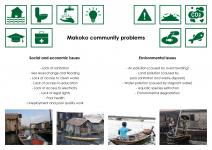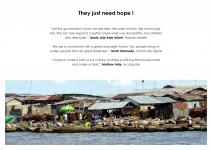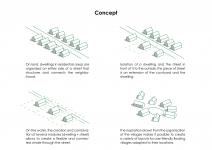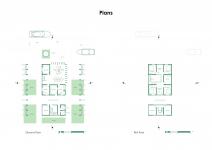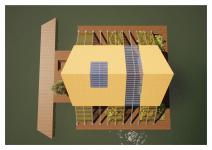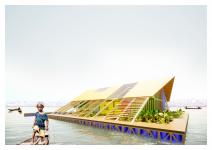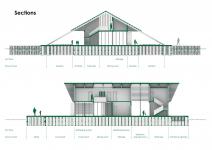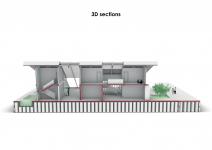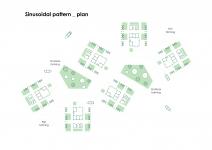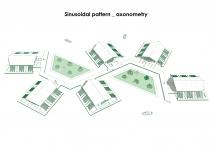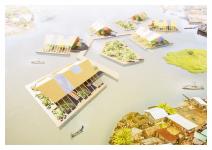Background, idea and rationale
Makoko is not only the largest floating slum in the world. It is also and above all a place where there is a great spirit of community, mutual aid, sharing and work. Unfortunately, its inhabitants are now threatened by pressure from the authorities and climate change and find themselves in the grip of fear and anxiety. Hope for a better and more prosperous future is diminishing every day at the expense of this anxiety.
In the face of this situation, we feel the need to seize the opportunity that the Arc has given us. Eddy Eguavoen foundation to think about the future of Makoko. Our goal is to improve the quality of life of the people through the design of their living space. Proposing a model of sustainable housing adapted to this slum is not only a way to recognize it as a community in its own right, but it also contributes to enhancing its image and identity.
Problems of building on water :
- The foundation is not solid
- Rising water levels
- Difficulty to move around
- Environmental pollution
- Lack of basic resources (drinking water, electricity, food, ...)
Potential of building on water :
- Flexibility (Homes can be placed in many locations and oriented in many ways)
- Water is a source of food (fish, ...)
- Water can be an extension of housing
Our proposal
Floating homes are the future of Makoko and the land as a whole in the face of rising sea levels. They not only ensure the survival of the people in these areas, but also preserve their cultures and histories.
We are creating a modular housing model that is self-sufficient in water and energy and has a wastewater treatment system. The houses are also equipped with an anaerobic digester for the production of biogas from organic waste. Solar panels will be hung on the sunbreakers above the allotment gardens. These gardens will allow each family to produce some of their own fruit and vegetables on site to reduce the problem of dependency on products from the city. Dry toilets will reduce pollution and a space is planned for an aquaponic greenhouse. Thanks to this passive and active design, the homes are therefore able to function independently.
However, the houses can be combined in several different ways to form a kind of community village adapted to their locations, with floating plantations and fish farms. This will gradually evolve from small scale (housing) to large scale (urban fabric). This evolution will be accompanied by other facilities such as health centers, schools, ... Like a «setup», this project is only the seed (sign of hope) that will germinate and give birth to a new, more resilient version of makoko ... a makoko 2.0
2020
Location: Makoko, a slum shared between the mainland and the Lagos lagoon in Nigeria.
A third of the community is built on stilts along the lagoon and the rest is on the land.
Our proposal consists of an adapted housing typology that can be combined in several ways to create a more resilient community.
Each module includes living spaces, as well as areas for farming, animal husbandry and dry toilets.
The housing modules are assembled in a variety of configurations: sinusoidal, hexagonal, linear, etc.
The ensembles are accompanied by floating plantations and fish farms.
The flotation system consists of reclaimed plastic drums and wooden frames.
Authors : Franklin YEMELI, Baden Baden EDGAR
Supervised by : El hadji Ousmane DIANE
SET HOPE, Rethinking makoko by design by Franklin Yemeli in Nigeria won the WA Award Cycle 44. Please find below the WA Award poster for this project.
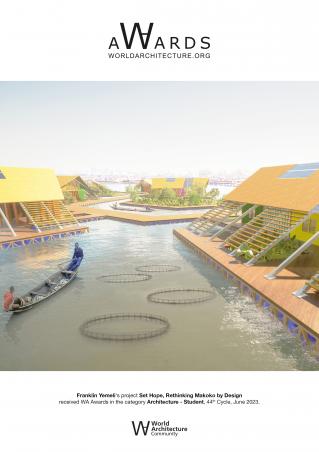
Downloaded 0 times.
Favorited 1 times
